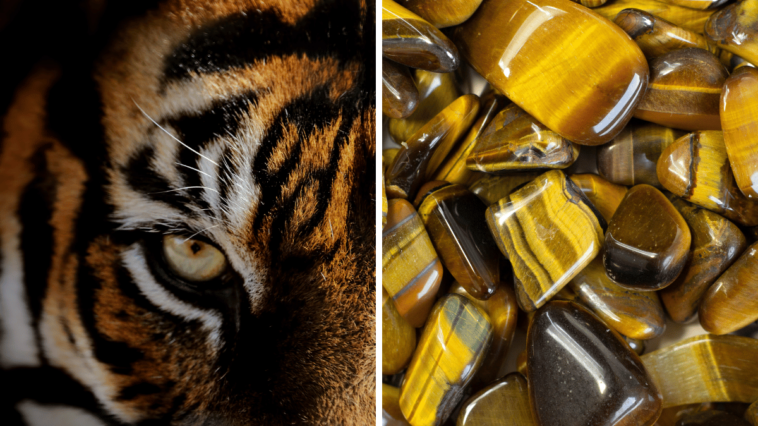Anyone who’s spent time in the world of rocks and minerals knows that there are a ton of them out there with odd names. Ranging from outright misleading to just goofy, these minerals deserve a guide of their own.
Let’s dig in with some misleading and weird names, giving you something to flex on those who aren’t quite up to speed.
Minerals With Misleading Names
The following minerals are all named in a way that is intentionally deceptive. I’ve stuck with some of the more common ones here, but a more complete list can be found on the International Gem Society website, which is primarily focused on misleading names for gemstones.
1. Fool’s Gold (Iron Pyrite)
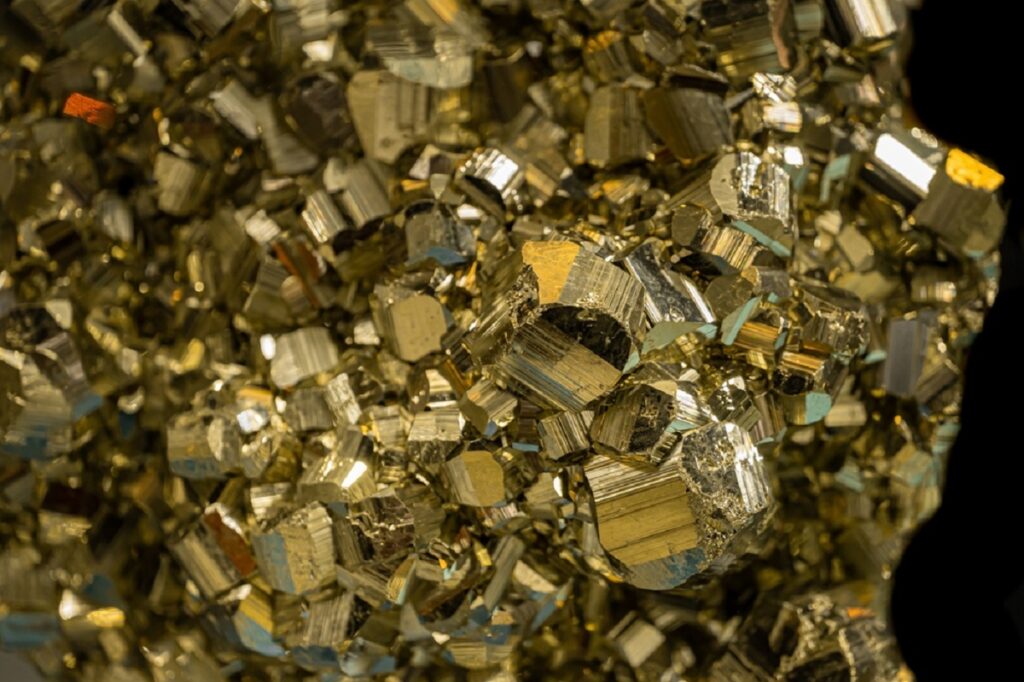
Fool’s Gold is a classic name for the cubic crystals of iron pyrite. This iron mineral is common and the brassy, euhedral crystals are a favorite with collectors. It wasn’t a favorite for amateur prospectors who would often bring in chunks of the stuff thinking they’d struck it rich during the various gold rushes around the world.
Iron pyrite has a similar color to gold, and often occurs in the same locations. It turns out that the hydrothermal action that places gold is often rich in sulfides, which react readily with other forms of iron in order to form iron pyrite. Both can even be found in quartz, which is the main rock in which native gold is deposited.
Fortunately, they’re fairly easy to tell apart if you know what you’re doing. Native gold will dent and is much softer than pyrite, which sits at 6.0-6.5 on the Moh’s scale. Complicating matters, it turns out that iron pyrite can actually contain substantial amounts of gold trapped in its crystalline matrix. In fact, in the absence of most of the old native gold deposits, it may be one of the best sources left.
How’s that for fooling you?
2. Bloodstone (Heliotrope)
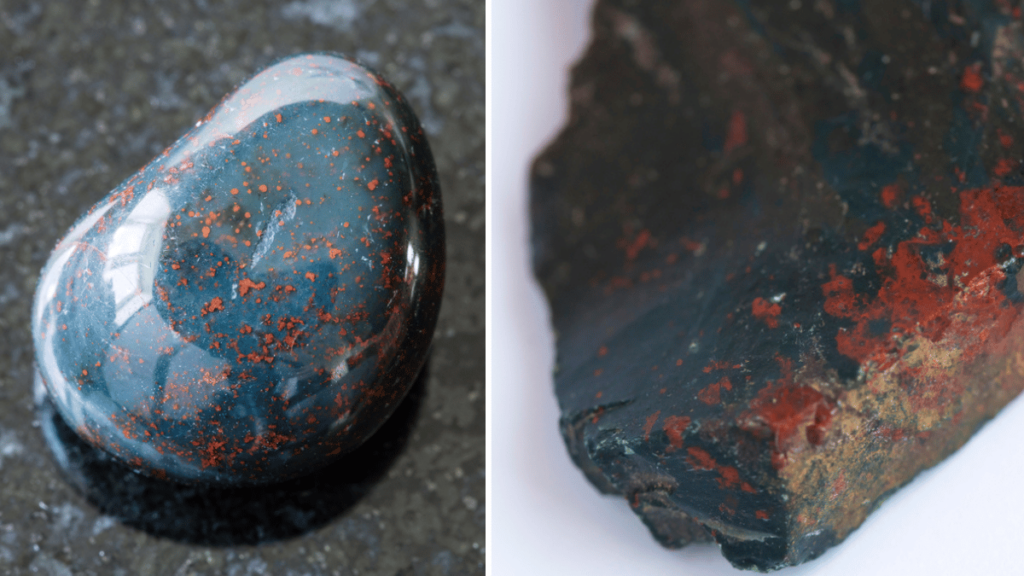
Bloodstone, more properly known as heliotrope, is a green and black rock. The common name comes from the red spots which appear on a dark green to black background color. It’s commonly sold, and I’d bet most collectors have a piece around somewhere.
Bloodstone is a form of jasper. Jasper is an opaque variety of chalcedony, meaning that it’s made up of a complex intermixture of quartz and it’s polymorph moganite. These tiny crystals interlock at a level that can’t be seen without some serious magnification, giving the stone a tell-tale waxy feel rather than a granular one.
The name comes from the tell-tale red “drops” that occur in the stone. More dramatic examples sometimes have large splashes of red, but small red spots are far more common. While not the most common stone, there are a few dozen confirmed sites to find it in the United States, These tend to be along the coasts, although there are also some instances of it in Colorado as well.
3. Malaysian Jade (Dyed Quartz)
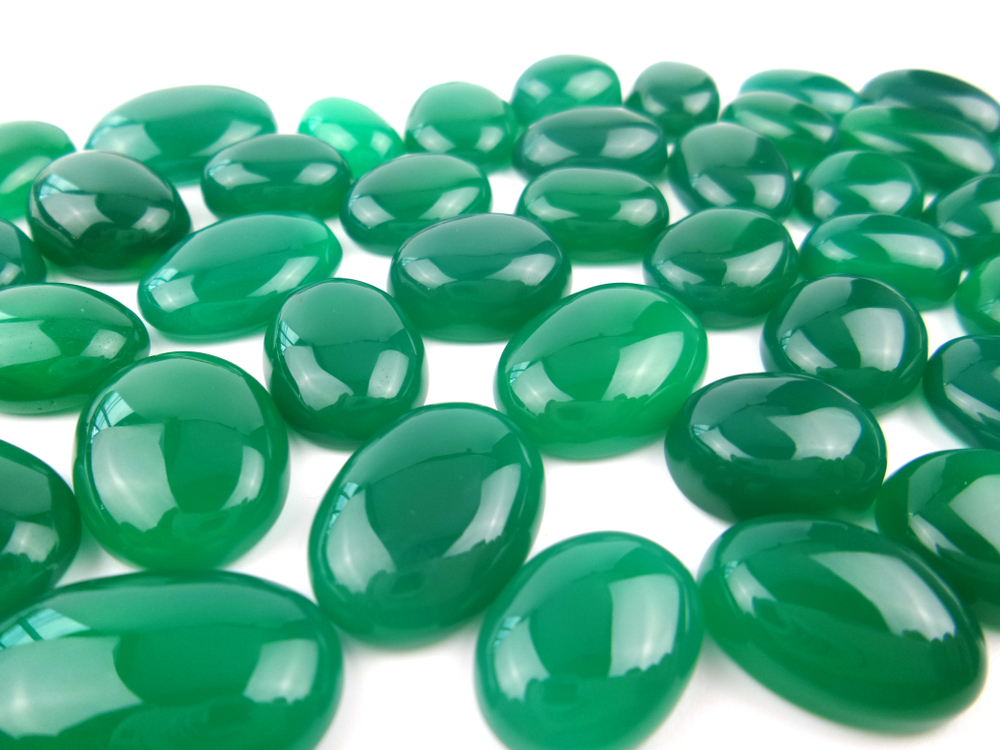
Jade is a strange stone. For a long, long time it essentially referred to any tough, green stone that showed translucency. There are actually two kinds of jade, nephrite and jadeite, with slightly different properties. Jadeite itself is one of the toughest rocks on the planet, being composed of fibrous bundles of pyroxene minerals. Malaysian Jade? Not a jade at all.
It’s fairly easy to get taken in by this stone. The dyeing process produces an intense green color, and backlighting shows complex patterns of “moss” inside the stone. This is actually an artificial dye that’s used and seeps into the interior cracks of the quartz. Pretty, but essentially worthless even though it’s price can often match nephrite jade varieties.
This is actually fairly common, Malaysian “Jade” is far from the only offender. There are many “jades” out there that are some form of dyed quartz or agate. While pretty, the name is outright misleading and is used intentionally to inflate the price of stones that should realistically only cost a few cents each. Make sure to do your research anytime you look into buying an unknown “jade” variety, as most of these scams are fairly well known.
4. Rose Rock (Barite With Sand)
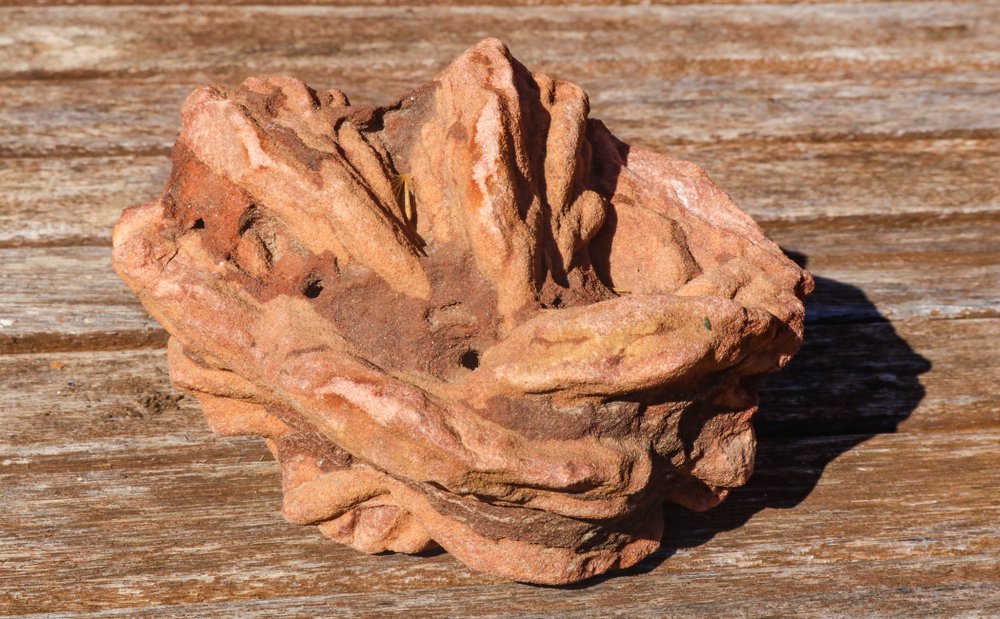
Rose rocks are a peculiar stone that emerges from Oklahoma. It may also sometimes refer to the so-called “desert roses” that show up in many places that have gypsum deposits. While they can resemble a rose, you’ll quickly find that a lot of them are just little clusters of bladed crystals.
Rose rocks are actually barite formations, but as the crystals formed small grains of sand were trapped inside. This gives them their trademark sandy texture and makes them appear like roses made out of sandstone. Barite is a primary source of barium, and specimens can fall into quite a few odd crystal habits.
When perfectly formed in a rosette of bladed crystals, rose rocks can be quite dramatic. But they’re certainly not a rose. Desert roses which consist of gypsum, are even more misleading since most of them don’t have a general rosette shape at all despite their name. The similarity in naming conventions means that new collectors should be careful, making sure that they only purchase the stone they’re actually looking for.
5. Tiger’s Eye (Variety of Quartz)

With its silky luster and bands of golden-yellow to red-brown colors, it’s easy to see how this stone captures the essence of the fierce and majestic animal it’s named after. But don’t be fooled—this gemstone isn’t some petrified biological relic of a tiger’s gaze.
Tiger’s Eye is actually a pseudomorph of quartz. Originally, the mineral was crocidolite, a blue asbestos. Yes, asbestos. Over time, the crocidolite fibers were replaced with silica while retaining their original fibrous shape. This transformation, known as pseudomorphism, is nature’s sleight of hand, turning one mineral into another while keeping its original form.
The chatoyancy, or the cat’s eye effect, is what really gives Tiger’s Eye its charismatic appeal. When light hits the fibrous structure within the stone, it reflects in such a way that it mimics the slit eye of a cat—or in this case, the intense gaze of a tiger. This optical phenomenon is not just mesmerizing; it’s the mineral’s signature trait.
6. Various “Diamonds” (Quartz)
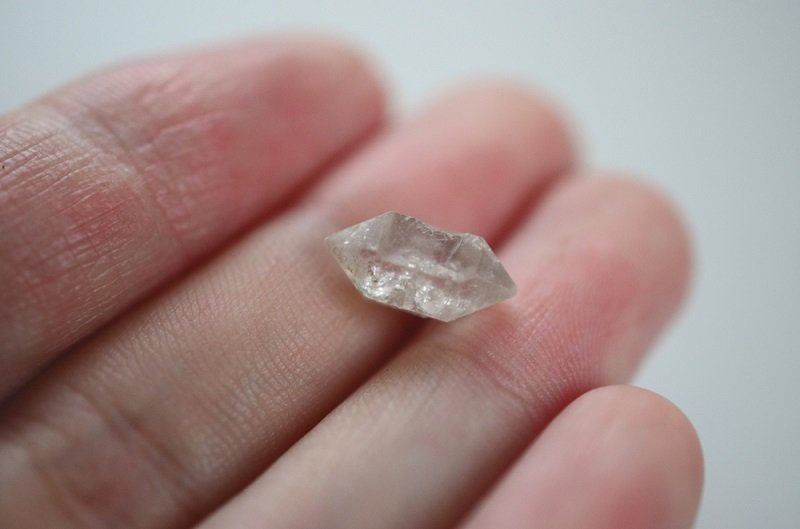
You’ll run into this naming convention entirely too often. “X diamond” is a common naming convention, used extensively for different varieties of quartz and chalcedony that are found across the planet. It’s very misleading, and in some instances, it may actually fool people.
Herkimer diamonds, for instance, are double-terminated quartz crystals found in upstate New York. A euhedral Herkimer at least superficially resembles a diamond with its shape. In other cases, such as Cape May Diamonds, it refers to something that doesn’t resemble a diamond in any way other than being clear. Complicating matters, Cape May Diamonds are often faceted and sold under the same name. While they don’t reach diamond prices, they get pretty expensive for what’s essentially just a bit of quartz.
Perhaps the worst offender, as far as a misleading name goes, is Pecos Diamonds. These are a colorful variety of double-terminated quartz that come from New Mexico, generally with an opaque yellow-to-red coloration. They don’t even bear a superficial resemblance to their namesake. These naming conventions have moved out of scam territory and are commonly used even by experienced mineral collectors, but new collectors need to do their research if they think something is actually a diamond.
7. Mexican Onyx (Banded Calcite)
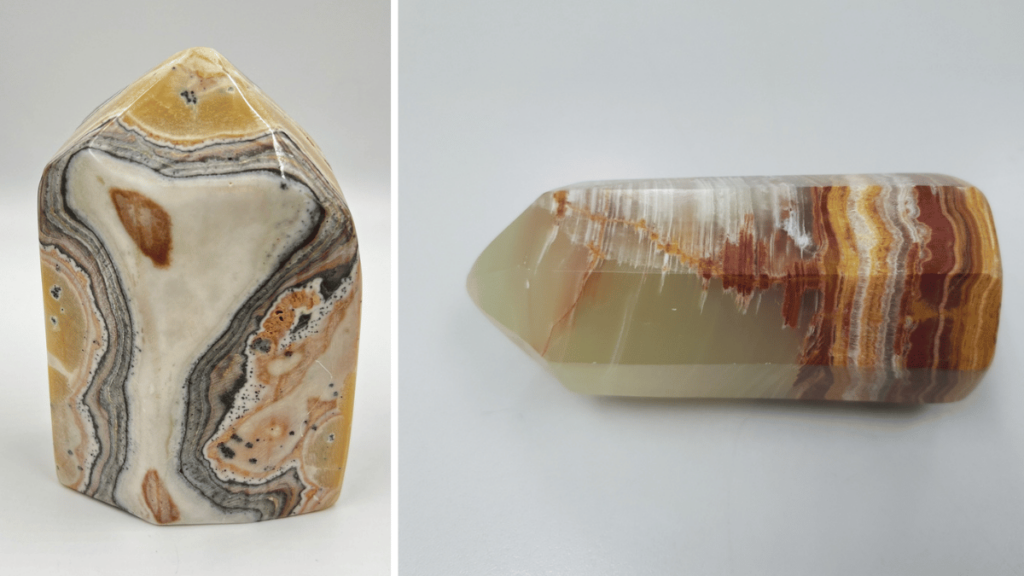
Onyx is a white and black banded variety of chalcedony, sometimes with other colored bands included. These days, real onyx gemstones are few and far between. Some of them are simply dyed white chalcedony. I can’t say how common real onyx is, but I’ve been unable to find a clean specimen like the one seen in samples of the material despite looking online for a few years.
Mexican Onyx isn’t even chalcedony. Instead, it’s a banded form of calcite, a much softer and more brittle mineral. It rarely even superficially resembles “real” onyx, often being a brown or yellow color. The bands superficially resemble agate to some degree but are more often interrupted and a bit jagged. It’s a pretty stone, but it’s not onyx.
Onyx, in general, is kind of an odd one if you want something natural. Treatments to dye the stone date back almost two thousand years, with treatments being covered in Naturalis Historia by Pliny the Elder first published in 77AD. Mexican onyx isn’t a bad choice for collectors, but be aware of price inflation by those who are trying to nab a few extra dollars out of convincing people their banded calcite is the real deal.
Minerals With Weird Names
Not all goofy names are part of some scam or intentionally misleading. Geologists have a great sense of humor, and we’ve ended up with a wide variety of stones that have names that, frankly, sound like a huge joke. Some of them probably are. While the depth of this subject is enormous, I figured we’d just cover a few of my favorites.
8. Fukalite
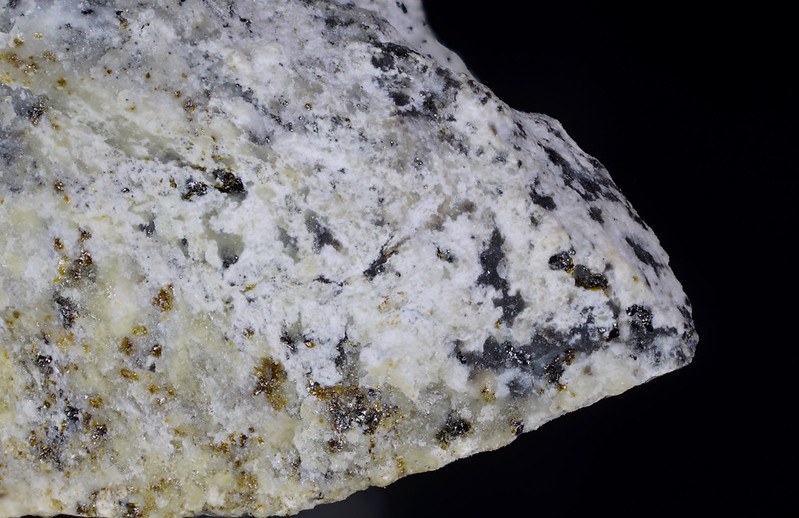
Fukalite is a rarely explored calcium carbonate silica hydrate material. In this case, the pronunciation is generally “fooka-lite”.
A relatively newly discovered mineral, first found in 1977, the name actually refers to the region where it was found. Specifically, it was found in Fuka, in the Okayama Prefecture of Japan. The mineral is found in massive form, composed of interlocking crystals, and occasionally as banded seams in the local rock.
While it superficially resembles calcite, it’s definitely its own mineral. And also a good example of how naming conventions can lead to a bit of lightheartedness in the world of geology.
9. Carnallite
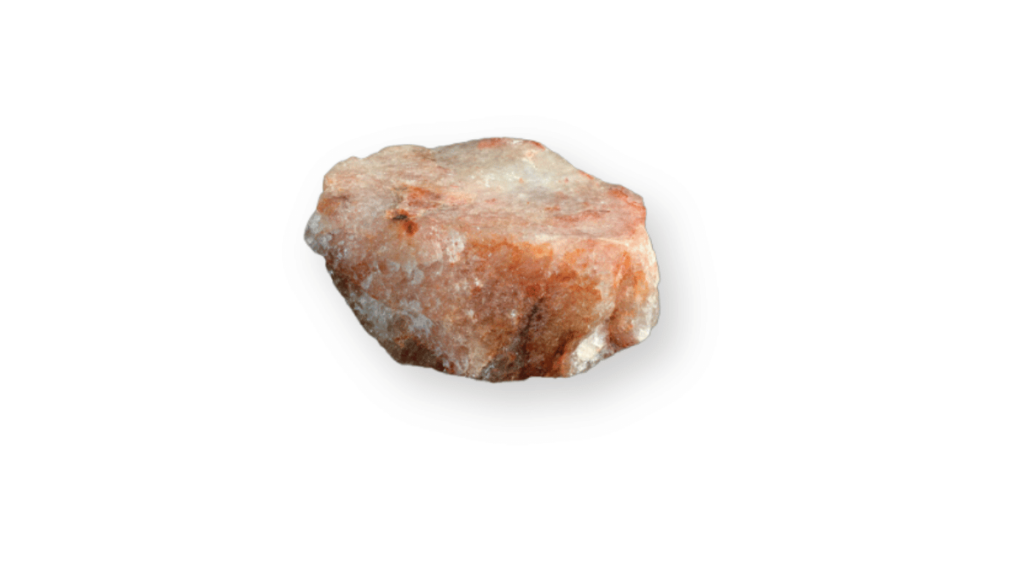
Carnallite is an evaporite mineral, specifically, it’s a form of hydrated potassium magnesium chloride. It’s generally found as fibrous, orthorhombic crystals that range from clear to red but sometimes show up in a blue variety as well.
Carnallite is very soft, at 2.5 on the Moh’s scale, and also has a very low specific gravity of 1.6. Far from exhibiting any carnal tendencies, carnalite is actually mainly used as a source of potash for fertilizers.
The oddest thing about this mineral is that it contains water directly in its chemical structure. This makes it a bit unique, as many hydrated minerals have simply “captured” water molecules in their crystals during formation. Carnallite is mainly found in saline evaporites and is associated with other marine evaporites like halite when found in its natural habitat.
10. Childrenite
Childrenite wasn’t named for being young, instead, it’s named after the man who discovered it: John George Children. It’s a fairly rare mineral without any real practical use. The primary market is collectors although geologists also have an interest in where it occurs.
Childrenite is a hydrated phosphate mineral. It actually has a fairly complex structure, including iron, aluminum, and phosphate as well. The crystals themselves are generally translucent and some shade of brown although some specimens can range closer to black.
Childrenite is generally found in pegmatites. These coarse-grained, intrusive igneous rocks are made up of large particles of different minerals and are a common source of crystals. While not practical, childrenite is often studied to learn about the contribution of potash minerals to pegmatite materials.
11. Cummingtonite
I can appreciate that the name actually comes from where it was first found, Cummington, Massachusetts. I’m not sure if the name was deliberate or just a fortunate coincidence, but come on, there’s no way you aren’t getting a giggle out of a mineral with that name. As you can imagine, many meme’s about this mineral have made their way around the internet.
Cummingtonite is a magnesium iron silicate hydroxide mineral. It’s actually metamorphic in origin, showing up in rocks that have undergone high-grade metamorphic transformations. It belongs to the amphibole group of minerals, and it generally shows up as fibrous crystals associated with asbestos minerals. These crystals are generally black to green depending on the iron content contained within.
Since we no longer use asbestos, or “rock wool” due to the high risk of cancer from airborne particles, it’s mainly studied as a way to look at the history of the Earth’s crust. Specimens should still be handled with care if you come across one since the fibers can become airborne and cause respiratory problems.
But with a name like that, just… come on geologists, you know what you’re doing with these names!
- Online rock and mineral club for collectors of all levels!
- Find community with like-minded rock and mineral enthusiasts.
- Monthly Giveaways!
- Free Access to Entire Digital Library of Products (annual memberships)

